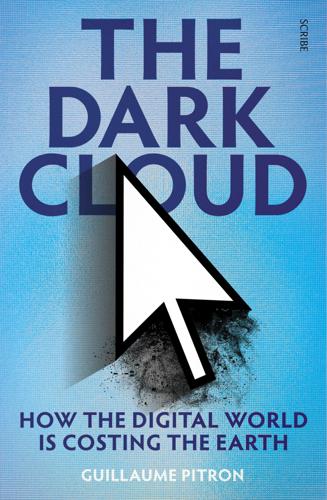
The Dark Cloud: How the Digital World Is Costing the Earth
by
Guillaume Pitron
Published 14 Jun 2023
As is woven into the plot of the Belgian-Canadian film The Hummingbird Project, starring Salma Hayek, in which two cousins in New York plan to beat the global financial system by pulling the straightest possible fibre-optic cable between Kansas City and the New York stock exchange.34 The stakes: a millisecond gained, and a tidy sum of $500 million a year. The storyline is amusing, and there’s an entertaining mix of actors. But it is not fiction. We go back to 2010, the year when the US firm Hibernia Atlantic announces its plans to build the Hibernia Express cable.35 More than the first transatlantic route deployed in 12 years, it will be, say its promoters, a 4,600-kilometre cable linking the London and New York stock exchanges … in less than 60 milliseconds there and back.
…
That is, unless the cable deteriorates, or the low-orbit satellite constellations, such those deployed by Elon Musk and his company Starlink, one day offer a service that is 30 per cent faster.47 Technically, it’s possible. Until then, clients are moving to Hibernia Atlantic in their droves. Trading companies will do whatever it takes to buy and sell faster than their competitors. ‘Accessing Hibernia Atlantic cost 100 times more than the “normal” route’, explains an anonymous source who operates the cable. ‘But our clients handle billions … If not connecting means losing business, well, you’ll pay anything to connect.’48 Of interest is that the internet was meant to eliminate distances; yet never had the developers of the Hibernia been so fixated on kilometres.
…
Once the cable reached the east coast of Canada, all that remained to be done was to direct the information via a network of antennas, ‘because light travels faster in the air than through optical fibre’, a specialist from the cable industry explained.45 On 15 September 2015, the cable was at last ready to go live. The directors of Hibernia Atlantic patted themselves on the back: their fibre-optic cable connected the two terminals in 58.95 milliseconds — 5 milliseconds faster than the competition.46 (See appendix 11.) Wilkie popped a bottle of champagne and said: ‘We’ve killed the market!’ All the biggest traders switched to the Hibernia Express. ‘No one will beat us,’ he said. That is, unless the cable deteriorates, or the low-orbit satellite constellations, such those deployed by Elon Musk and his company Starlink, one day offer a service that is 30 per cent faster.47 Technically, it’s possible.
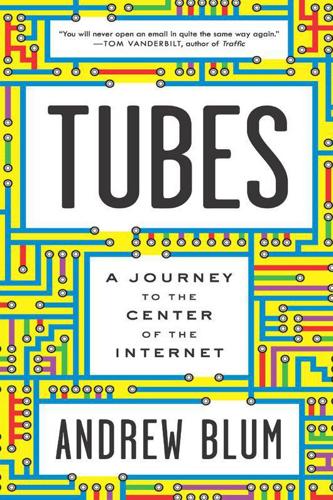
Tubes: A Journey to the Center of the Internet
by
Andrew Blum
Published 28 May 2012
But compared with the transatlantic cables that landed on Long Island, by the time a bit went down the coast and back up to the city, the route effectively made London and New York two hundred more miles apart. At the time no one thought it mattered. “Now I get beaten up in meetings because there’s one millisecond extra compared to our competitors,” Cooper said, rubbing his brow. The first new transatlantic cable in a decade will be laid in 2012 by a small company called Hibernia-Atlantic. They designed it from scratch to be the fastest. The micro geography matters just as much. Specialized ships conduct surveys of the ocean bottom, carefully plotting routes over and around underwater mountains—like grading a railroad, but without the option to dig any tunnels. The paths carefully avoid major shipping lanes, to limit the risk of damage from dragging anchors.
…
In Rochester, Jim Watts, Mary Hughson, Louis LaPack, Mike Duell, and Nels Thompson provided the background info. Then in Cornwall, Jol Paling shared his beautiful part of the world. The Porthcurno Telegraph Museum is an invaluable resource for the history of undersea cables; archivist Alan Renton became a friend in the valley. At Hibernia Atlantic, Bjarni Thorvardarson welcomed me in and Tom Burfitt gave a great tour. At Tata Communications, Simon Cooper allowed everything to happen, most especially the chance to watch a cable land on the beach; his colleagues Janice Goveas, Paul Wilkinson, Rui Carrilho, and Anisha Sharma made it work.
…
See Deutscher Commercial Internet Exchange Gates, Bill, 57 Gilbert, John, 174–75, 176, 177–78, 179–80 Global Crossing, 125, 153, 183, 202–3, 208, 209–10, 253 Global Internet Geography “GIG” (TeleGeography), 14, 27 Global Switch, 183 globalization of “peering,” 125–26 undersea cables and, 197 Goldman Sachs, 261 Google Cerf at, 45 in China, 257 as content provider, 79 data centers/storage for, 229, 231, 234–35, 237–50, 254, 255, 257, 258, 261 and Internet as series of tubes, 5 invisibility of political borders and, 147 IPO for, 69–70 Menlo Park location of, 69 mission statement of, 248 as most-visited website, 127 NANOGers at, 120 New York City location of, 163–64, 172 number of daily searches on, 231 peering and, 122–23, 125–26 privacy issues at, 258 secrecy/security at, 242–50, 254, 257 Gore, Al, 63 government, Dutch, AMS–IX and, 147 government, US, role at MAE-East of, 62–63. See also military, US; specific department or agency Great Eastern (cable ship), 203, 253 Great Western Railway, 203 Greenpeace, 230, 261 Hafner, Katie, 51 Halifax, Canada: cable station near, 211 Hankins, Greg, 157, 159 HEPnet, 52 Hewlett-Packard, 74 Hibernia-Atlantic, 199 High Performance Computing and Communications Act (“Gore Bill”), 63 High Rise (Ballard), 181–82 Homeland Security, US Department of, 238 Honeywell DDP–516 minicomputer, 39, 44 Hong Kong, 128, 194, 198, 200 How to Lie with Maps (Monmonier), 15 hubs, 64, 109–10. See also specific hub Hubs + Spokes: A TeleGeography Internet Reader (TeleGeography), 26 Hugh O’Kane Electric Company, 165, 166, 167 Hurricane Electric, 121, 266 IBM, 52 IMP (interface message processor) beginning of Internet and, 36, 39–49 expansion of Internet and, 50 first successful transmission of, 48 India, 204 “information highway”: Internet as, 19–20, 63–64 ING Canada, 124 International Brotherhood of Electrical Workers, 166 Internet backbone of, 14, 18 cables as “inter” part of, 97 capitalization of, 106–7 centers of, 9, 108–9, 112–13, 268 decentralization of, 54 earth’s connection to, 101–3 efficiency of, 231 essence of, 47, 135 expansion of, 6, 49–57, 109, 118, 138 fail-safe for, 100 286 as fantasy, 8 fickleness of, 261 founding ideology of, 54, 133 geography of, 28 globalization of, 70–71, 87, 193 Gore as inventor of, 63 “ground truth” of, 29 as handmade, 118 history of, 35–57, 107, 147 as hub-and-spoke system, 109–10 as human construction, 158 images of, 5, 6–8, 9, 18, 34, 107–8, 229–30, 266–68 as “information highway,” 19–20, 63–64 Kleinrock as a father of, 41–42 light of, 162, 163 limits of, 3 as math made manifest, 163 meshed connectivity of, 27, 64–65 most important places on, 127 myths about, 40 openness/publicness of, 30–31, 73–75, 116, 117–18, 124, 133 as overlap of geographical and physical elements, 19 photographs of, 21 prevalence of, 3, 34 questions about what is the, 2–10, 264–68 quintessence of, 163 reality of, 9 as self-healing, 200 as series of tubes, 5–6 shutdown of Blum’s, 1–4, 18, 144, 264 smell of, 44, 49 structure of, 27, 54, 64–65, 87 threats to, 116–17 uneven distribution of, 262 as unfinished, 67 uniqueness of, 106 usage of, 3, 34, 55, 66–67 Internet Assigned Numbers Authority, 29, 30, 31, 45 Internet exchanges “IX” as center of Internet, 108–9, 112–13 characteristics of largest, 111–13 competition among, 133–35 definition of, 109 gap between average-size and large, 130 as hub-and-spoke system, 109–10 location of, 113 peering and, 121–22, 126, 127, 129, 130 problems of, 109–11 rationale for, 109 security at, 113–16 See also specific exchange Internet Explorer (Microsoft), 57 Internet Heritage Site and Archive, Kleinrock, 44–45 “Internet Mapping Project” (Kelly), 7–8 Interxion, 140 Inventing the Internet (Abbate), 35–36 IP addresses, 29, 30, 31–32 The IT Crowd (TV show), 108, 143 Jagiellonian University (Poland): Traceroute example for, 31–32 Japan, 27, 33, 111, 113, 196, 198, 199, 201, 208 Jobs, Steve, 267 JPNAP (Tokyo), 111, 113 Juniper routers, 99–100 Justice Department, US, 123 Karlson, Dave, 244–45 Kelly, Kevin, 7, 8–9 Kenya, 198 Kingdom Brunel, Isambard, 203, 253 Kirn, Walter, 38 Kleinrock Internet Heritage Site and Archive (UCLA), 44–45 Kleinrock, Leonard, 36, 41–49, 51, 52, 69, 158 Kozlowski, Dennis, 195 KPN, 148, 155, 266 Krisetya, Markus, 13–17, 21, 23, 25, 26–27, 28, 45 Kubin-Nicholson Corporation, 13–14, 16–17, 21 landing stations, cable, 193, 202, 203.
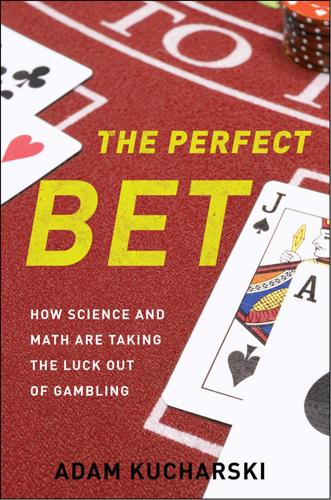
The Perfect Bet: How Science and Math Are Taking the Luck Out of Gambling
by
Adam Kucharski
Published 23 Feb 2016
Companies are doing all they can to ensure they get to the action before their competitors do. It has led to many firms placing their computers directly next to stock exchange servers. When the market reacts quickly, even a slightly longer wire can lead to a critical delay in making a trade. Some are going to even more extreme lengths. In 2011, US firm Hibernia Atlantic started work on a new $300 million transatlantic cable, which will allow data to cross the ocean faster than ever before. Unlike previous wires, it will be directly below the flight path from New York to London, the shortest possible route between the cities. It currently takes 65 milliseconds for messages to travel the Atlantic; the new cable aims to cut that down to 59.
…
See soccer Four Horseman’s method, 36–38, 45, 72 Fréchet, Maurice, 148 freeroll tournament, 144 Friedman, Milton, 111 Friedrich, Carl, 80–81 fundamental analysis, 55–56 future payoffs, maximizing, 153 Galileo fund, 100 Galla, Tobias, 160, 161, 162 Galton, Francis, 46–47, 51, 106, 205 Gambling Act, 71, 201 gambling laws, 20–21, 22, 71, 100, 198, 200, 201 gambling traits, traditional, 208 “Game of Poker, The” (Turing), 170 game theory, 137, 141, 148, 149, 151, 154, 155, 156, 160, 162, 163, 169, 178, 180, 181, 183, 208, 217 Gaming Act, 21 Gandy, Robin, 170 Ganzfried, Sam, 184 Garrood, Andrew, 87, 88 Gerrard, Steven, 104 get-so-many-in-a-row-style games, 158–159 See also tic-tac-toe Ginther, Joan, 28 Gödel, Kurt, 150, 151, 169, 176 golf, 84–85, 107 Gossett, William, 26, 52 Government Code and Cypher School, 169 gravity, 19 Guardian (newspaper), 94, 117 Guinness brewery, 52 hackers, 121 Hand, David, 204 Hanson, Robin, 92 Hard Rock casino, 87 Harvey, James, 28–29, 30, 31–32, 218 Hastie, David, 78, 105, 113 headline wager, 75 “Heads-Up Limit Hold’em Poker Is Solved” (Bowling et al.), 188 heads-up poker, 172, 186, 188, 195 See also Texas hold’em poker hedge funds, 96, 97, 99–100, 101, 120, 122, 204 hedging bets, 95, 96, 99 Heeb, Randal, 198, 199, 200, 201 Henry, Thierry, 104 Heuer, Andreas, 78 Hibbs, Albert, 3–4, 7, 21 Hibernia Atlantic, 113 Hilbert, David, 150 hockey, 85, 204, 205, 207 Holt, Matthew, 88 Hong Kong Jockey Club, 43, 90 horse racing bankroll management in, 65–67 betting syndicates and, 35, 52–53, 54, 56, 57–58, 64, 66–69, 103, 206 compared to golf, 84 fading of data availability limitations in, 73 favorite-long-shot bias in, 45, 46, 57 gambling law and, 198 and the Hong Kong tracks, 43–44, 54–55, 66–69, 74, 114 measuring individual performance in, 103 and the Monte Carlo method, 61–62 pari-mutuel system in, 43–45, 66, 114 Pinnacle Sports and, 93 prediction methods in, 46, 49–50, 51–54, 55–58, 64, 68, 69, 74, 206, 207, 216, 218 and quality measurement, 50–51, 74 and regression analysis, 49, 50 robotic betting and, 115–117 university courses studying, 215 “How to Gamble If You Must” (MIT course), 213–214 human insight, importance of, 105 human language, analyzing, 166 hybrid bots, 184 hydrogen bomb, 58, 59, 60, 61, 83, 202 IBM, 166–167 iceberg order, 115 ignorance first degree of, 2 second degree of, 3, 8, 11, 21–22 third degree of, 3, 8, 12, 21 illegal betting/gambling, 42, 81–82, 90–91, 101, 198 Illegal Gambling Business Act, 200 illusion, 218 imitation game, 170–171, 177, 194 incompleteness, 150, 168, 173 incompleteness theorem, 150, 176 inconsistencies, 150 Indian Premier League, 90 infinite monkey theorem, 156–157, 199 information theory, 11 information-processing problem, 168 inheritance, 47–49, 51, 106 in-play analysis, 97–98 Internet, benefits of, 72–73 investing, 96, 97–100, 204 See also hedge funds; stock/financial markets Irish National Lottery, 33 Jackson, Eric, 167 Jagger, Joseph, 7 Jennings, Ken, 165–166 Jeopardy!
…
In 2005, another plan started to take shape in the corridors of Random Hall. James Harvey was nearing the end of his mathematics degree and needed a project for his final semester. While searching for a topic, he became interested in lotteries. The Massachusetts State Lottery was set up in 1971 as a way of raising extra revenue for the government. The lottery runs several different games, but the most popular are Powerball and Mega-Millions. Harvey decided that a comparison of the two games could make for a good project. However, the project grew—as projects often do—and Harvey soon began to compare his results with other games, including one called Cash WinFall.
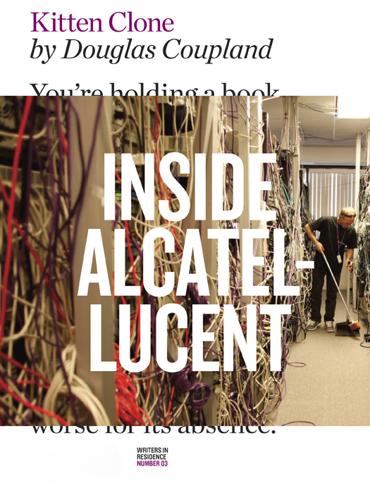
Kitten Clone: Inside Alcatel-Lucent
by
Douglas Coupland
Published 29 Sep 2014
Marine cable names, when viewed together, somewhat resemble a catalogue of extremely high-end yachting gear and sonar equipment: ACS Alaska-Oregon Network (AKORN) Alonso de Ojeda ALPAL-2 American Samoa-Hawaii (ASH) Antillas 1 Asia-America Gateway Australia-Japan Cable Bahamas Domestic Submarine Network Baltica Batam-Rengit Cable System Canada-United States 1 Cayman-Jamaica Fiber System Challenger Bermuda-1 (CB-1) Colombia-Florida Subsea Fiber (CFX-1) Denmark-Sweden 17 East African Marine System Emerald Bridge Estepona-Tetouan Fehmarn Bält Fiber Optic Gulf Fibralink Finland Estonia Connection Gemini Bermuda Geo-Eirgrid GO-1 Mediterranean Cable System Gondwana-1 Greenland Connect Guam Okinama Kyushu Incheon (GOKI) Hibernia Atlantic Hokkaido-Sakhalin Cable System Kattegat 1 Kodiak Kenai Fiber Link Latin American Nautilus Latvia-Sweden 1 (LV-SE 1) Lower Indian Ocean Network (LION) North Asia Loop Pacific Fibre Pangea Baltic Ring Pangea North Saudi Arabia-Sudan-2 (SAS-2) SeaMeWe-4 Svalbard Undersea Cable System Tangerine Tasman-2 Tata TGN-Pacific Turcyos-2 Ulysses Yellow/Atlantic Crossing-2 (AC-2) Near land, most marine cables are laid inside deep trenches cut by deep-water plows.
…
He’s like a god.” Okay, then: this is just the sort of problem scientifically gifted people take and solve, and then they extrapolate what they learned from the process and convert the knowledge into a useful project. Bell Labs hires, literally, the smartest people on earth, about 25 percent from the United States, the remainder from Europe, Asia and the Indian subcontinent. I wonder what sorts of projects these competitive fellows are working on. Perhaps they work in quantum computing, a field of research Bell Labs is actively engaged in. The quantum computer is a device that is still in its theoretical phase that makes direct use of quantum mechanical phenomena, such as superposition and entanglement, to perform operations on data.
…
This book also uses what I learned about Alca-Loo as a stepping stone into larger meditation … about what data and speed and optical wiring are doing to us as a species–about what the Internet is doing to us as it relentlessly colonizes the planet and our brains, about how a totally under-the-radar company has transformed our interior lives, and how far the process will go before people step back and say, “You know, I really don’t remember my pre-Internet brain at all.” I could never have written this book had Alain de Botton not spent a week at Heathrow Airport and then used his experiences there as a way of musing on travel and the human soul in his book A Week at the Airport. His decision to expand his project by asking other writers to investigate other organizations made for a fascinating year. Thank you, Alain. This book has a “surly” feel to it. I wanted to mirror the way we look for information on the Internet: its random links, its chance encounters, and its happy coincidences. I trekked over three continents trying to locate the core of something that largely has no core, which led me to conclude that maybe it doesn’t need one.
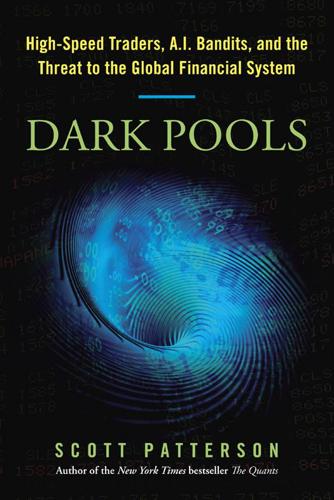
Dark Pools: The Rise of the Machine Traders and the Rigging of the U.S. Stock Market
by
Scott Patterson
Published 11 Jun 2012
Welcome to the new level playing field of high-frequency trading. The phenomenon wasn’t confined to the United States—it was going global. In October 2010, just months after Spread Networks plugged into Nasdaq, fiber-optic companies Hibernia Atlantic, based in Summit, New Jersey, and Huawai Marine Networks, of Tianjin, China, announced a plan to lay the first transatlantic fiber-optic cable built in a decade, a half-billion-dollar project that was projected to cut five milliseconds off trades between New York and London. Once complete, the three-thousand-mile cable would stretch from Halifax, Nova Scotia, across the North Atlantic to Somerset, England.
…
Trading Machines was his best shot at the big time—running his own fund, building a trading empire to span the globe. He’d planned to use his windfall to fund research efforts to combat genocide, a long-held dream that went back to his grandparents’ narrow escape from Poland after the Nazi invasion of 1939. Bodek had already helped fund one of the earliest Darfur information projects in 2003 and had spent more than $100,000 on projects to intervene in atrocities around the world. But he wanted to do much more. Then the Machine stopped working, and Bodek channeled every bit of his brain power toward fixing it. Like the obsessive mathematician in the movie Pi, he shut out all distractions, including his own family, and dove into the data.
…
In 2007, he broke out on his own and convinced twenty-five top-notch traders, programmers, and quants (an industry term for mathematicians who use quantitative techniques to predict markets) from across Wall Street to join him. He set up shop in Stamford and launched Trading Machines just as signs emerged of an impending global financial crisis. It had amounted to one of the most ambitious trading projects outside a large investment bank in years. Despite the bad timing, Trading Machines had fared well in its debut, posting a tidy profit during a time when most of Wall Street was imploding. Then something went wrong with the Machine. Bodek was on a mission to fix it. Whatever it was. As the morning progressed, Bodek’s team of traders and programmers filed into Trading Machines’ third-floor office space.
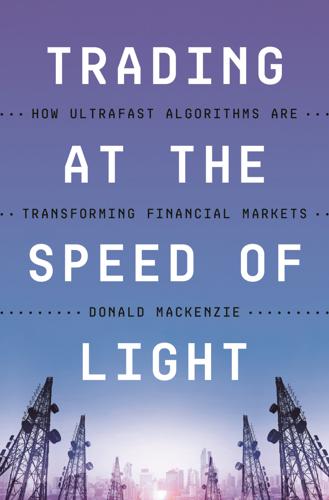
Trading at the Speed of Light: How Ultrafast Algorithms Are Transforming Financial Markets
by
Donald MacKenzie
Published 24 May 2021
The algorithm will take into account the pattern of bids, offers, and trades in those futures, as well as patterns in the trading of the other Treasury and interest-rate futures also traded in that datacenter. The algorithm will receive, via microwave links, data on the buying and selling of the underlying Treasurys, which are traded in the two datacenters in New Jersey shown in the map in figure 4.1. Via Hibernia Atlantic’s ultrafast transatlantic cable, it will receive data on the trading of futures on UK sovereign bonds (these futures are traded in a datacenter just outside of London) and the equivalent German futures, traded in a datacenter in Frankfurt called FR2. Data on Japanese government bonds will come from a transpacific cable and yet more microwave links.
…
Reuters, which had spent some $100 million developing the system in return for a fee of $1 per trade, was not receiving an attractive return.11 Not only had Globex failed to become truly global, but the entire project of introducing electronic trading to the CME was faltering. Before we turn to the product that saved it, we need to consider the road not taken: a radically different form of automation. Before its temporary participation in Globex, the Chicago Board of Trade had an automation project of its own, known as Aurora. Also intended for trading when the pits were closed, and also designed to have a global reach (especially to East Asia), the Aurora project, announced in March 1989, involved the Board of Trade and three information-technology companies: Apple, Texas Instruments, and Tandem.
…
“What I mean by that is an opportunity to do things that you think that you could not do before.”2 It would have been easy for the Chicago futures exchanges to see the eruption of interest on Capitol Hill in the early 1970s in regulating them simply as a threat, but the CME’s Leo Melamed seems to have glimpsed “an opportunity to do things.” As he told me in an interview in November 2000 for an earlier project (MacKenzie 2006), the creation of a new federal futures regulator could increase the standing of markets that had been damaged by periodic scandals. It would “legitimatize what we were doing. Anyone that has a federal agency over it is a legitimate thing. You don’t have a federal agency over gambling.”